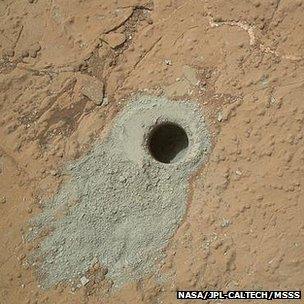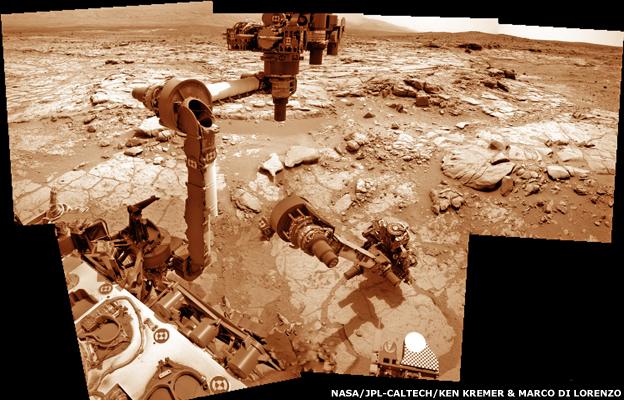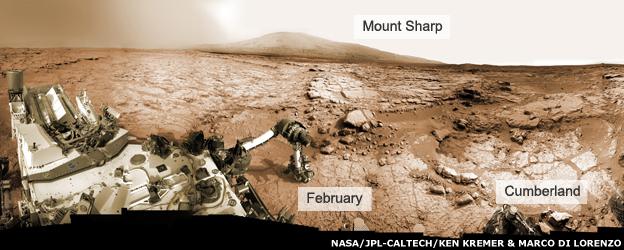Nasa's Curiosity Mars rover drills second rock sample
- Published

The expectation is that the second sample will confirm the earlier rock analysis
Nasa's Curiosity rover on the Red Planet has drilled a second rock sample to deliver to its onboard laboratories.
The powder was taken from the interior of a target dubbed "Cumberland" by the science team.
This rock is about 2.75m from the site where the rover acquired its first drill sample in February.
Analysis conducted on this earlier powder revealed details of a past environment on Mars that would have been favourable to microbial life.
Curiosity's instruments determined the rock to have been laid down billions of years ago in a benign water setting, possibly a lake, and to retain markers for key chemical and energy conditions required for biology.
The new Cumberland sample, which will be delivered to the rover's Sam and Chemin labs in the coming days, is expected to confirm this assessment.
Curiosity has now spent 280 Martian days in the planet's equatorial Gale Crater.
For most of this period, the robot has been investigating a small depression called Yellowknife Bay. The location is about 500m east of Curiosity's August 2012 touchdown point.
The mission team is keen to get the robot moving towards the main mission destination - the foothills of the big mountain that dominates the crater floor.
It will likely take many months to get to Aeolus Mons (also known as Mount Sharp).
When Curiosity does set out on this big drive, it will stop briefly to re-examine some rocks it saw on the way into Yellowknife Bay.
This outcrop, referred to as Shaler, is a classic example of cross-stratification, a rock structure built in a turbulent flow of water.
The panoramic landscapes featured on this page were assembled by Ken Kremer and Marco Di Lorenzo, external from pictures sent back by Curiosity's navigation cameras.

This mosaic incorporating images from the robot's navcams shows the robotic arm moving downwards to acquire the new drill sample from the rock called Cumberland

The rover has now drilled two sample holes in Yellowknife Bay. Soon, it will begin the months' long journey to the foothills of Aeolus Mons, also known as Mount Sharp
Jonathan.Amos-INTERNET@bbc.co.uk and follow me on Twitter: @BBCAmos, external
- Published8 May 2013
- Published4 December 2012
- Published27 September 2012
- Published6 August 2012